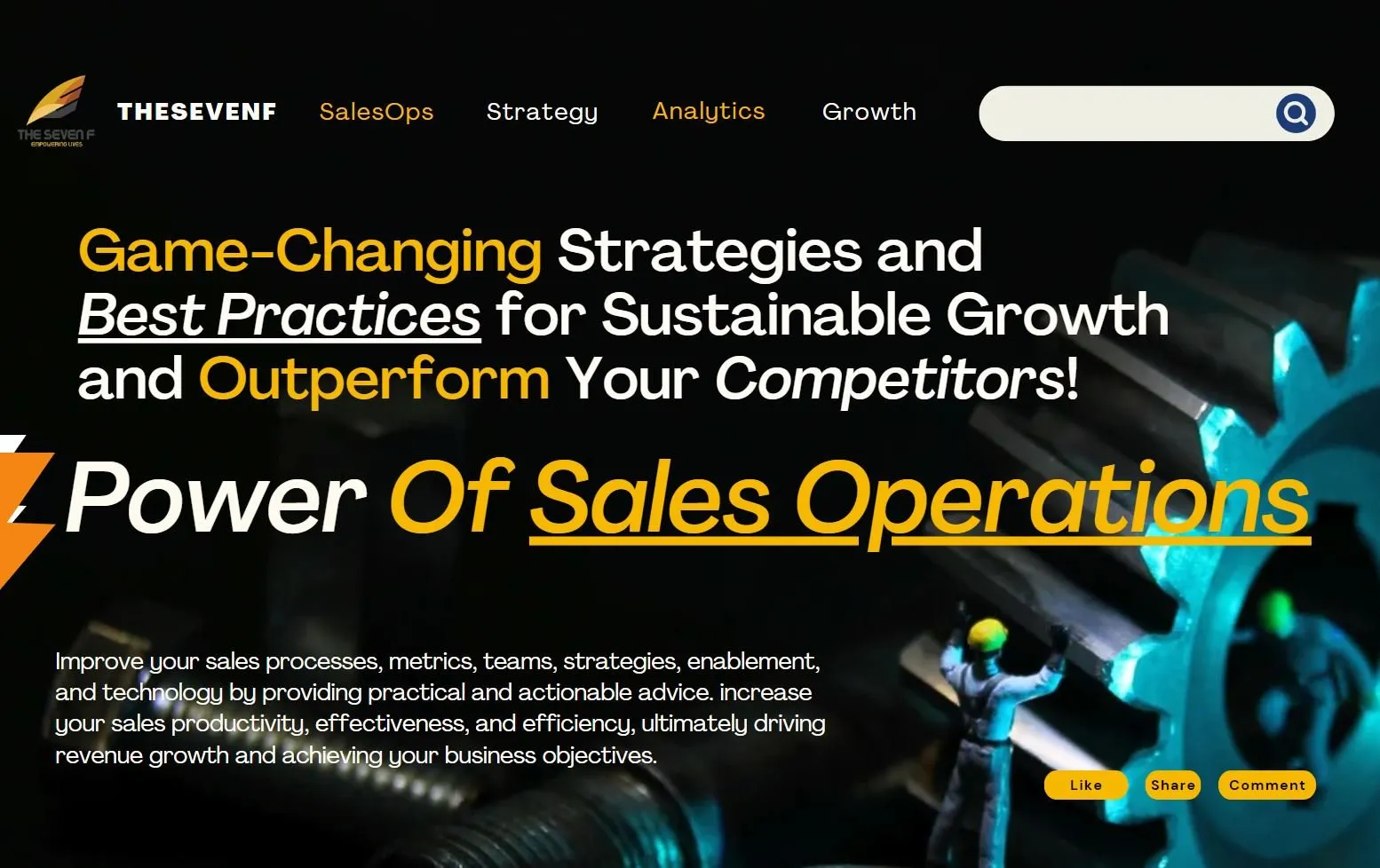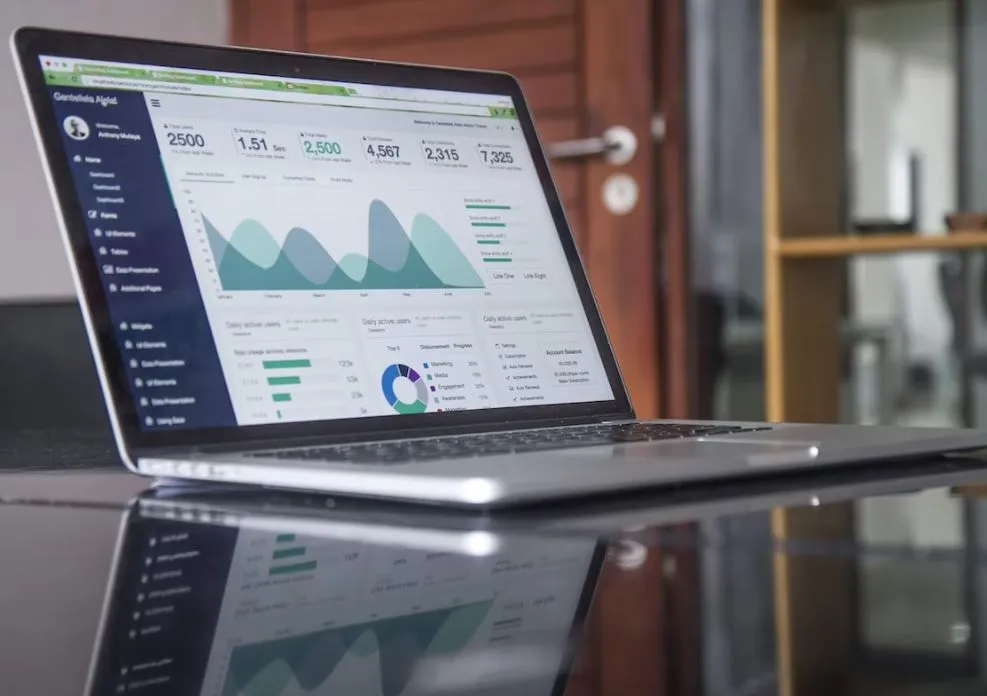Unlock The Secrets of Sales Pipeline Management Best Practices: Boost Your Revenue Today!
If you're in sales, you know that managing your sales pipeline is essential to success. A well-managed sales pipeline can help you track your progress, identify areas for improvement, and ultimately close more deals. But how do you go about managing your sales pipeline effectively? In this article, we'll cover the best practices for building and optimizing your sales pipeline, including the key stages, processes, software tools, templates, and metrics you need to succeed.
👉 Sales Pipeline Stages:
First, let's start with the key stages of a sales pipeline.
Sales pipeline stages refer to the different steps that a potential customer goes through before they make a purchase. Each stage represents a specific point in the buyer's journey and is an essential part of the sales process. By understanding the sales pipeline stages, businesses can identify the areas of the process that need improvement and adjust their strategy accordingly.
The following are the different sales pipeline stages and why they are important:
1 . Prospecting / Lead Generation:
The first stage of the sales pipeline is prospecting. This stage involves identifying potential customers and reaching out to them to gauge their interest in your product or service. This is typically done through marketing campaigns, advertising, and referrals. Prospecting is important because it helps businesses identify potential customers and start building a relationship with them.
To implement this process in your business, you can use a customer relationship management (CRM) tool to track leads and follow up with potential customers.
2 . Qualifying:
Once potential customers have been identified, the next stage is to qualify them. This involves determining if they are a good fit for your product or service and if they have the budget and decision-making authority to make a purchase. Qualifying is important because it helps businesses focus their efforts on leads that are most likely to convert into paying customers.
To implement this process in your business, you can use a lead scoring system to rank potential customers based on their likelihood of converting.
3 . Needs Assessment:
During this stage, the sales team works with the potential customer to understand their needs and requirements. This involves asking questions and gathering information about the customer's pain points, goals, and expectations. Needs assessment is important because it helps businesses tailor their solution to meet the customer's specific needs and address their pain points.
To implement this process in your business, you can train your sales team to ask open-ended questions and actively listen to the customer's responses.
4 . Presentation and Proposal:
Once the needs assessment is completed, the sales team presents their solution to the potential customer. This involves creating a customized proposal that outlines the features, benefits, and pricing of the product or service. The presentation and proposal stage is important because it helps businesses showcase their value proposition and demonstrate how their solution can meet the customer's needs.
To implement this process in your business, you can use a sales enablement tool to create and share high-quality content with your customers.
5 . Closing:
The closing stage is where the potential customer makes a final decision to purchase the product or service. This involves negotiating terms and finalizing the details of the agreement. The closing stage is important because it is where the sale is made and revenue is generated.
To implement this process in your business, you can use a sales contract management tool to streamline the negotiation and approval process.
6 . Follow-Up:
The final stage of the sales pipeline is follow-up. This involves staying in touch with the customer to ensure their satisfaction with the product or service and to identify opportunities for future sales. Follow-up is important because it helps businesses build long-term relationships with customers and generate repeat business.
To implement this process in your business, you can use a customer feedback tool to collect feedback from customers and identify areas for improvement.
Understanding the different sales pipeline stages and why they are important is crucial for businesses that want to improve their sales process and generate more revenue. By focusing on each stage and optimizing their strategy, businesses can increase their chances of converting leads into paying customers and build long-term relationships with their clients.
And it's important to have processes in place for each one of them leveraging various tools and technologies as mentioned above.
👉 Sales Pipeline Tracking:
Sales pipeline tracking is the process of monitoring the progress of potential sales leads as they move through the various stages of the sales process. It involves tracking each lead's status, estimated revenue, and next steps in order to ensure that each lead is being properly managed and that opportunities are not being missed. In this article, we will discuss the importance of sales pipeline tracking, the different tools and software available to help with tracking, and how it differs from sales pipeline reporting and sales pipeline analytics.
Why is Sales Pipeline Tracking Important?
Sales pipeline tracking is crucial for businesses of all sizes because it allows them to:
✅ Identify which leads are most likely to convert into paying customers: By tracking the progress of each lead through the sales process, businesses can identify which leads are most likely to convert into paying customers and focus their resources on those leads.
✅ Optimize their sales process: By analyzing the data collected from sales pipeline tracking, businesses can identify areas of their sales process that need improvement and make adjustments to optimize the process.
✅ Forecast revenue: Sales pipeline tracking allows businesses to forecast future revenue based on the number of leads in the pipeline and the likelihood of those leads converting.
4 Steps to follow when tracking your sales pipeline:
STEP #1: Choose a sales pipeline tracking software/tool:
To effectively track your sales pipeline, you need a software/tool that allows you to manage your leads, track progress, and visualize your pipeline. There are many sales pipeline tracking software/tools available, such as Pipedrive, HubSpot, and Salesforce.
STEP #2: Define your sales pipeline stages:
Your sales pipeline consists of several stages that represent the different steps that a lead goes through before they become a customer. You need to define each stage of your sales pipeline, from lead generation to closing the deal. This will help you track the progress of each lead as they move through the pipeline.
STEP #3: Assign values to each stage:
Assigning values to each stage helps you measure progress and track the probability of closing the sale. This is called the sales pipeline velocity. You can assign values based on the likelihood of a lead progressing to the next stage, and the value of the deal at each stage.
STEP #4: Monitor your sales pipeline:
Once you have defined your sales pipeline stages and assigned values to each stage, you need to monitor your sales pipeline regularly. This will help you identify any bottlenecks, gaps, or opportunities for improvement. You can track your sales pipeline using a dashboard that displays the status of each lead and the expected revenue.
Tools and Software for Sales Pipeline Tracking:
There are several tools and software available to help businesses track their sales pipeline. Some of the most popular tools include:
CRM Software: Customer Relationship Management (CRM) software is designed to help businesses manage their customer interactions and sales pipeline. Many CRM systems include features for tracking leads, managing contacts, and forecasting revenue.
Sales Management Software: Sales management software is designed specifically to help businesses manage their sales process. These tools often include features for tracking leads, setting goals, and generating reports.
Sales Pipeline Tracking Templates: A spreadsheet or template can be used to track the progress of leads through the sales pipeline.
👉 Sales Pipeline Optimization
Optimizing your sales pipeline is all about identifying areas for improvement and implementing changes that will help you close more deals. Here are a few best practices for optimizing your sales pipeline:
Streamline Your Sales Process: Look for areas in your sales process where you can streamline or automate tasks. This will help you move leads through the pipeline more quickly and efficiently.
Analyze Your Metrics: Take a deep dive into your sales pipeline metrics to identify areas where you can improve. Look at metrics like conversion rates, lead-to-opportunity ratios, and deal size to identify areas for optimization.
Provide Value at Each Stage: Make sure you're providing value to your leads at each stage of the sales pipeline. This will help you build trust and increase the likelihood that they'll convert into paying customers.
By optimizing your sales pipeline, you can increase your close rates and ultimately drive more revenue for your business. for more on how to optimiza your sales pipline using sales analytics check out this article.
👉 Sales Pipeline Analytics
Analytics are critical to understanding your sales pipeline and identifying areas for improvement. Sales pipeline analytics allow you to track your progress, identify bottlenecks, and optimize your sales process for maximum efficiency.
Some key sales pipeline analytics to track include:
Conversion Rates: This metric measures the percentage of leads that convert to opportunities, and opportunities that convert to closed deals.
Lead-to-Opportunity Ratios: This metric measures the percentage of leads that become qualified opportunities.
Deal Size: This metric measures the average size of your closed deals.
By analyzing these metrics and others, you can gain valuable insights into your sales pipeline and make data-driven decisions to optimize your process.
For more KPIs on sales pipeline analytics check out this article here.
👉 Sales Pipeline Reporting
Finally, reporting is critical to keeping your team and stakeholders informed about the progress of your sales pipeline. Sales pipeline reporting allows you to share insights and metrics with your team and stakeholders, and ensure everyone is aligned around your goals.
Some key elements of sales pipeline reporting include:
Regular Updates: Provide regular updates to your team and stakeholders about the progress of your sales pipeline.
Key Metrics: Highlight the key metrics that you're tracking and use data visualization tools to make the data easy to understand.
Action Items: Include action items for your team to help move leads through the pipeline more quickly and efficiently.
By effectively reporting on your sales pipeline, you can keep your team and stakeholders informed and aligned around your goals.
👉 Sales Pipeline Tracking vs. Sales Pipeline Reporting vs. Sales Pipeline Analytics: What's the Difference?
Sales Pipeline Tracking:
Sales Pipeline Tracking is the process of monitoring the progress of leads and opportunities through different stages of the sales process. It involves keeping track of the status of each opportunity, identifying potential issues that may delay or prevent a sale from closing, and taking action to address these issues.
⚫ Focuses on tracking individual opportunities through different stages of the sales process.
⚫ Helps sales teams identify potential bottlenecks and take corrective action to move opportunities forward.
⚫ Enables sales managers to monitor the progress of their team's sales activities and identify areas for improvement.
⚫ Typically involves the use of a CRM system or other sales tracking software.
⚫ Key metrics tracked in Sales Pipeline Tracking include the number of leads, conversion rates, and the length of the sales cycle.
Sales Pipeline Reporting:
Sales Pipeline Reporting is the process of analyzing and reporting on the sales pipeline to provide insights into the performance of the sales team. It involves generating reports and visualizations that show key metrics, such as the number of leads, conversion rates, and the value of deals in the pipeline.
⚫ Focuses on providing a high-level overview of the sales pipeline.
⚫ Helps sales managers identify trends and patterns in their team's sales activities.
⚫ Enables sales teams to track progress towards goals and identify areas for improvement.
⚫ Typically involves the use of reporting tools, such as dashboards, to provide a visual representation of key metrics.
⚫ Key metrics tracked in Sales Pipeline Reporting include the number of leads, conversion rates, win rates, and the value of deals in the pipeline.
Sales Pipeline Analytics:
Sales Pipeline Analytics is the process of using data analysis techniques to gain insights into the performance of the sales pipeline. It involves analyzing data from various sources, such as the CRM system, sales reports, and other data sources, to identify patterns and trends in the sales pipeline.
⚫ Focuses on using data analysis to gain deeper insights into the performance of the sales pipeline.
⚫ Helps sales managers identify areas for improvement and optimize the sales process.
⚫ Enables sales teams to identify opportunities for cross-selling and upselling.
⚫ Typically involves the use of advanced analytics tools, such as machine learning and predictive analytics, to analyze sales data.
⚫ Key metrics tracked in Sales Pipeline Analytics include lead sources, sales cycle length, conversion rates, win rates, and deal value.
Bottomline, The key performance indicators (KPIs) tracked in Sales Pipeline Tracking, Sales Pipeline Reporting, and Sales Pipeline Analytics can be similar or the same. However, the focus and depth of analysis may vary depending on the specific aspect of sales pipeline management being addressed. For example, Sales Pipeline Tracking may focus on tracking individual opportunities through different stages of the sales process, while Sales Pipeline Reporting may provide a high-level overview of the sales pipeline to identify trends and patterns. Meanwhile, Sales Pipeline Analytics may use advanced data analysis techniques to gain deeper insights into the performance of the sales pipeline and identify areas for optimization. Overall, the goal of tracking these KPIs is to improve the sales performance and drive revenue growth
Summary:








